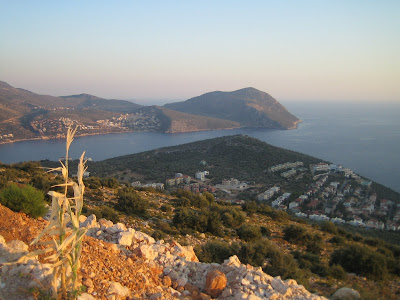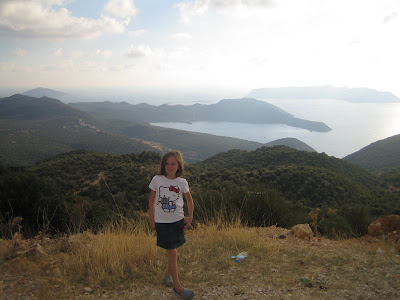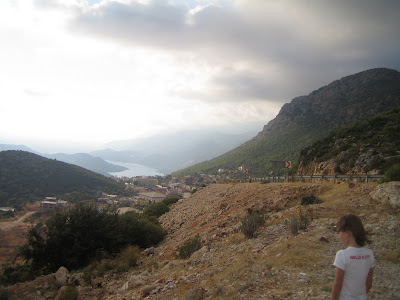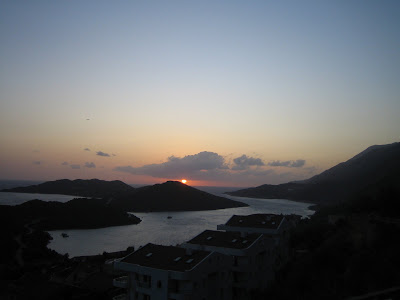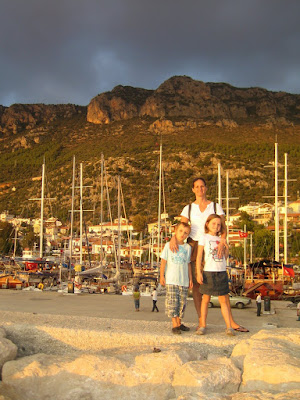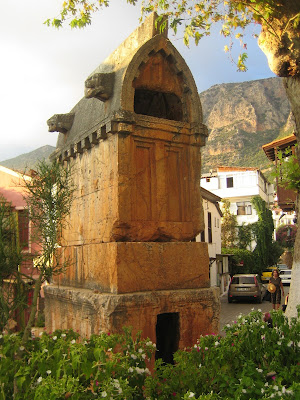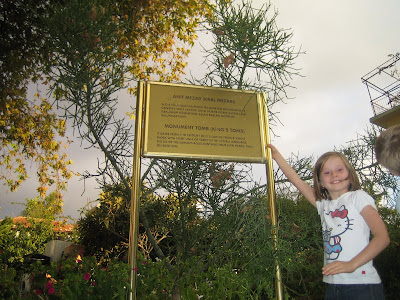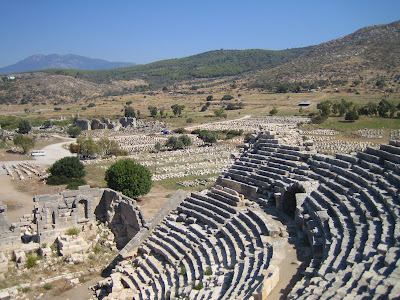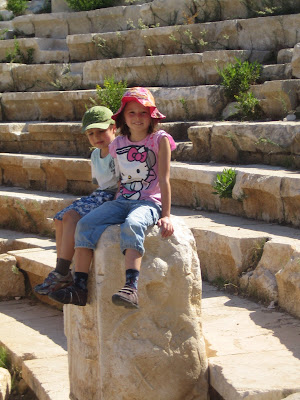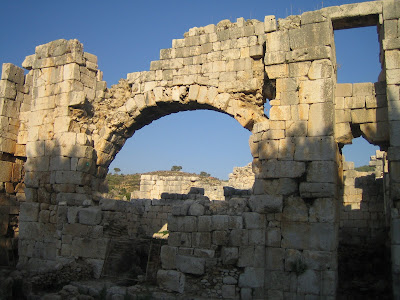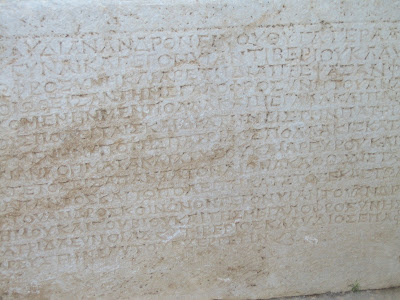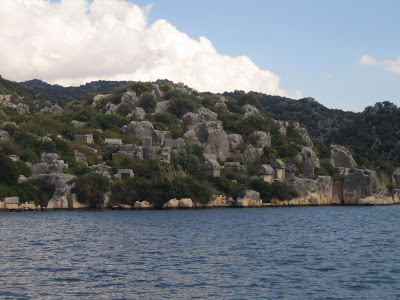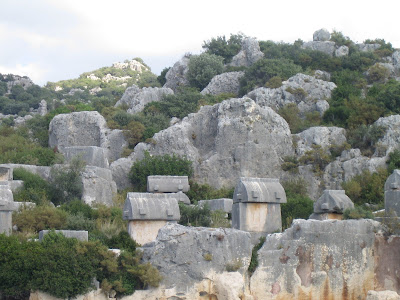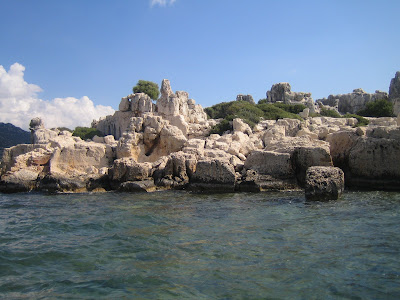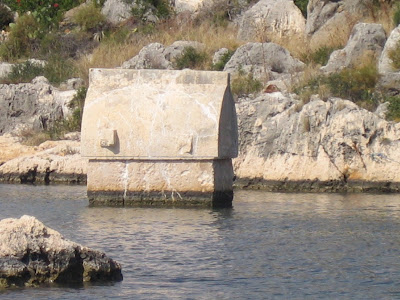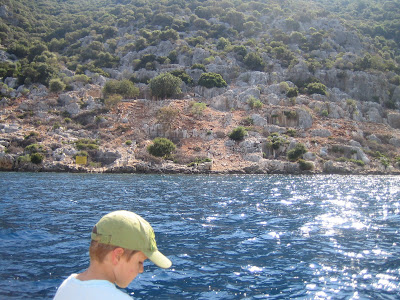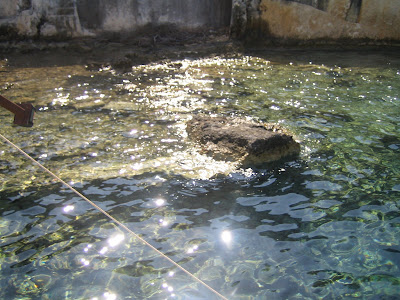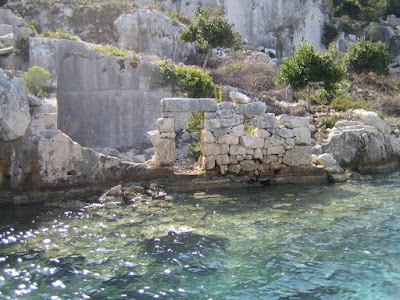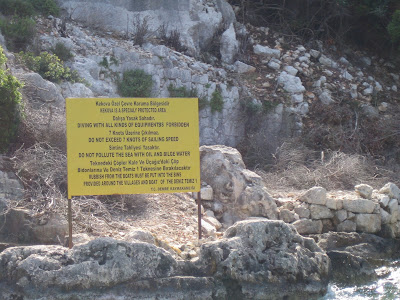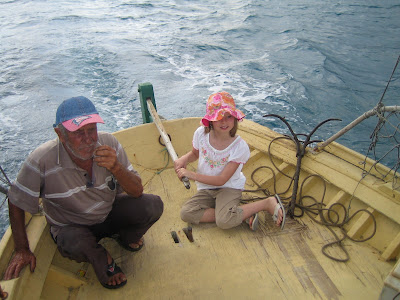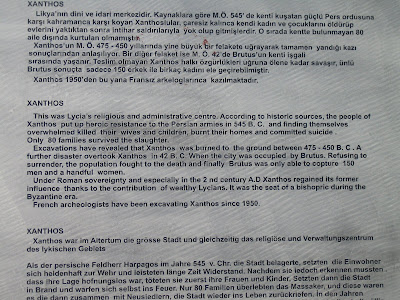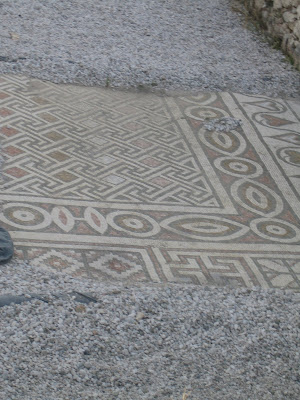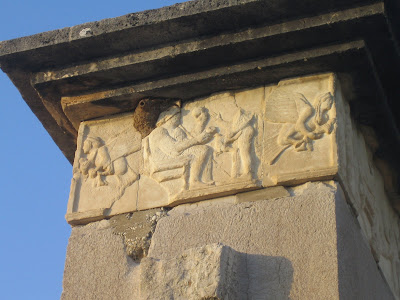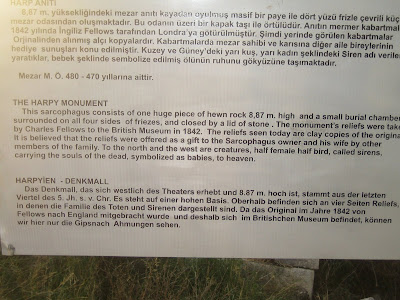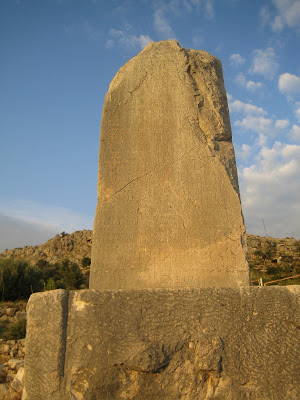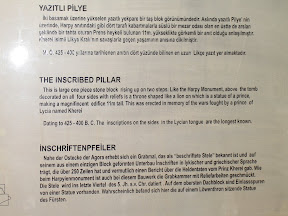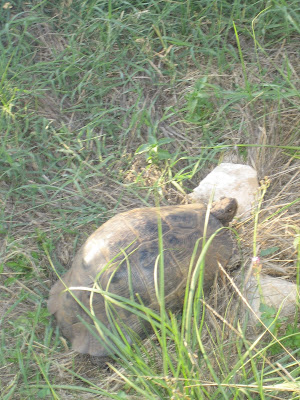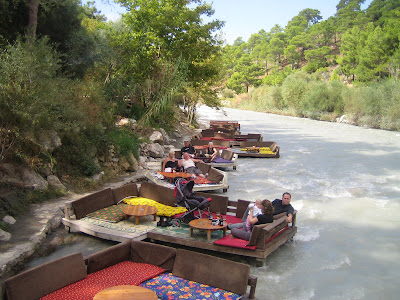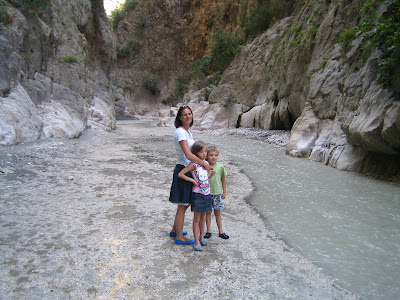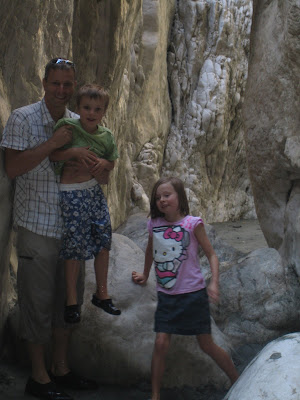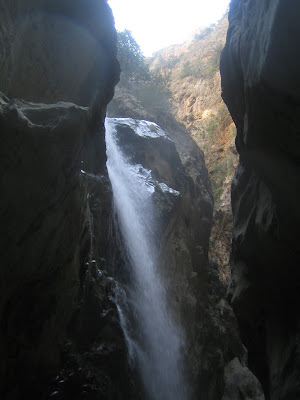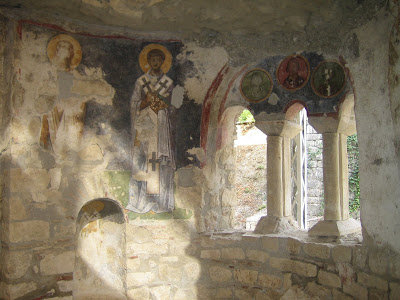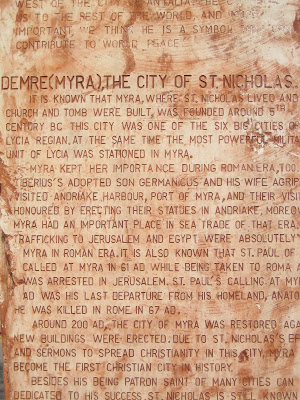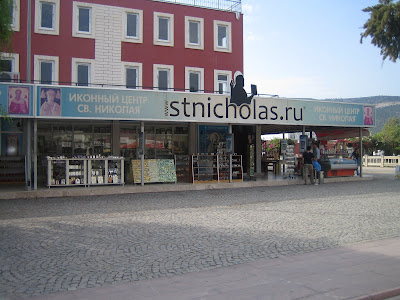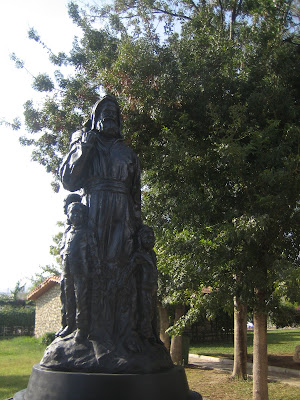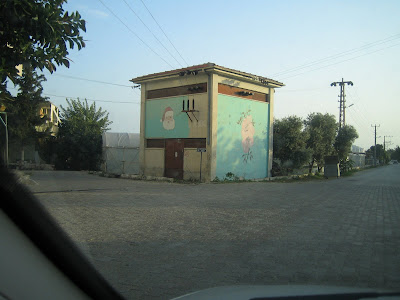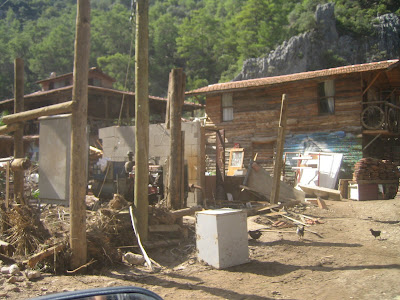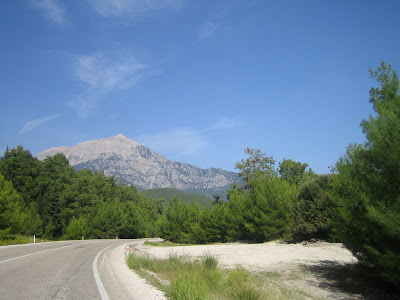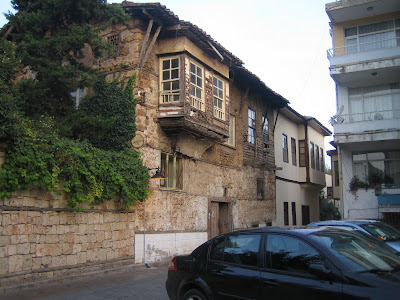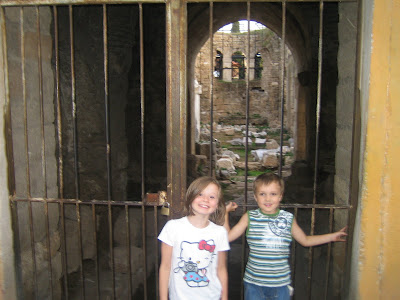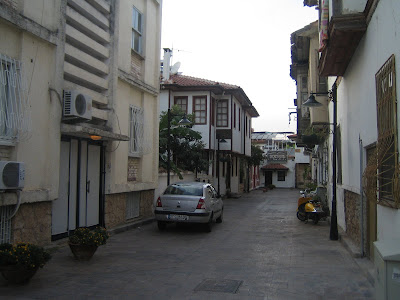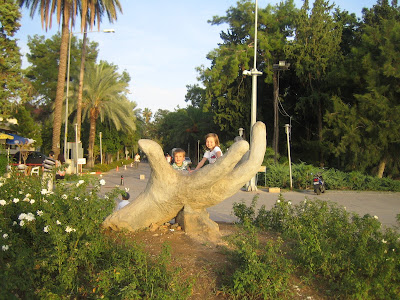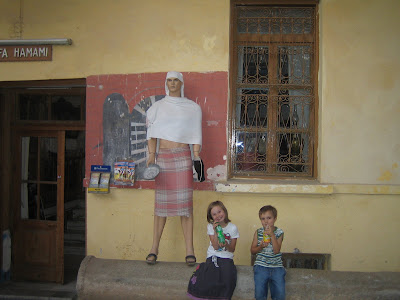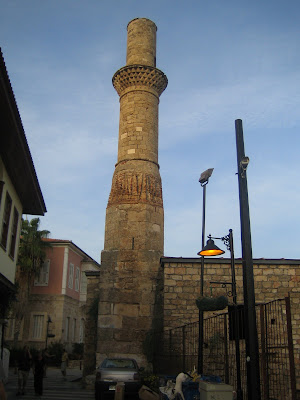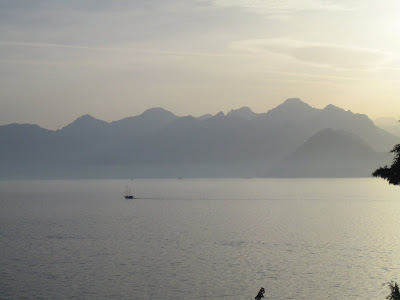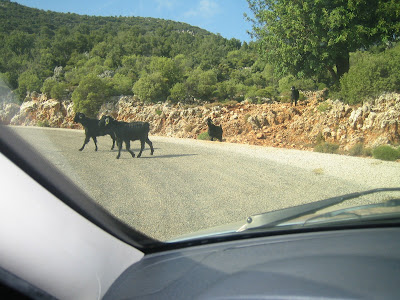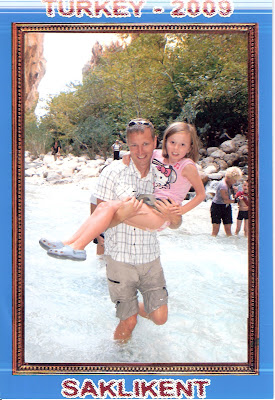Saturday, November 28, 2009
Pentaho platform introduction
Here is a slideshow on this second part which introduces the Pentaho platform ....
I'm hoping to investigate the ROLAP engine (Mondrian) soon ...
Martin
Friday, November 13, 2009
Kas, Turkey
Landing on Istanbul, we are quickly reminded that it is a Muslim world by seeing the number of Minaret breaking through the skyline of the city. One of the first sound we heard the next morning outside our hotel (at the airport), was the Adhan (call to prayers in Islamic religion) coming out from the speakers installed onto the Minaret. It was our first pleasant change of culture but a bit of stress as we were expected to catch another flight transiting to Antalya but had to wait in the small bus for, what I suspect, the driver to complete his Salah (muslim prayers). Traditionally, the prayers are the obligatory rites of the religion, and are to be performed five times a day. However, we found the religious fever in Turkey to be quite moderate ... and apparently the Salah is now spoken in Arabic language which most Turkish do not even understand!
So that will be it for the religious signs since the religion is mostly left outside the public affair in this officially "laïque" society (secular). For the more curious, you can refer to Atatürk (founder of the Republic of Turkey) revolution and modernization of the society just after the Ottoman empire fall down... BTW, Turkish women received rights to vote before most westerner countries: 1930 (ref. http://www.ipu.org/wmn-e/suffrage.htm).
The place we chose in Turkey was the Mediterranean region just south west of Antalia as this area offers quite a lot of variety in terms of natural and cultural attractions.
Our kids enjoying the view from the house rented from the french tenant. BTW, quite a lot of retired Europeans are staying over here and enjoy the nice climate at low price¨.. rent can average around 300€!
Ok a little bit of history ( Turkey's history is anything but little ;-)) . I remember not being very good at it during my young age , because I've never been motivated in learning stuff simply for what they were without involving some kind of logical thinking and reasoning..... (it could be related to how history was taught as it seemed to me that the goal was to cram and memorize as many events as possible without much hindsight on the relations and intricacies between these).
Having said that, my country history was limited to about 400 years! I can help but have .. a small thought for turkish kids having to learn their country history at school!
Referring to my Guide Bleu de Turquie (Blue guides are probably the oldest and best of tourism guide.. ), the long history of Turkey has been characterized by many different change of reigns and regime overruled which evolved in time almost from the Bronze age up to now!! A very brief summary would need to at least give these over-lapping periods :
- pre-historic Bronze (XI to 1200 BC) with the first establishment, the Hittites empire taking control of Babylon, until the fall of Troy and of the empire.
- Greek (XII to I) civilization from the conquest of Alexander the Great to his death and the later control by Roman.
- Roman empire (300 to 565 AD) with the change of Byzance to Constantinople (new Roma) done by Constantin.
- Byzantine (726 to X AD, the Roman empire continuation into the middle age) from the iconoclasm (ban of religious icons) to the schism seperating the Orthodox and the Roman church.
- Seljuq dynasty (1055 to 1303) originating from the Turcoman tribal around Bagdad and going into a long westerner migration to the fall following the invasion of Mongol
- Ottoman empire (1326 to 1923) emerging from the Turco-Persian Seljuq in northern Antolia, the Ottomans will remain in control of the region for a few centuries and developping a brillant civilization reaching passed the Balkans, the middle-east and north Africa. Unable to modernize they will succomb to the europeans and russians and finally collapse after the end of WW1.
- Modern Turkish (1923-) from the recognition of a reduced territory sovereignty (compared to Ottoman period) and the establishment of a laic and parlementary-based republic. It is during this period that a massive exchange of people occured (1.3 million) between Greece and Turkey.
This evolution has left many traces that can still be witnessed in various part of this region. The evolution of the city of Kas is a perfect illustration of this long history....see next.
Kas and vicinity:
The archaeological search done in and around Kas, revealed the city of Antiphellus. Originally this ancient town of Antiphellus, was the harbour of the town of Phellus which stood in front of it. Alexander the Great (Alexander III from Macedon) annexed this region into his kingdom to make it part of Greek empire. During Roman empire Antiphellus gained importance and became an episcopal centre during the Byzantine period. After, it was conquered by the Arab who rename it Andifli (there are turkish companies with this name nowadays), and later ruled by the Tekeogullan Principality (I'm confused here...it is probably the first time it happens: I like to grab info from touristic pamphplet/guide while travelling and later get back home and google these ... I obviously get other info, nice photos, people comments, etc.. ! Now nothing came out with this principality name !!! I guess the Tekeogullan had had very limited historical & geographical impact ... I should ask for the Turkish equivalence and look for it in Turkish).
Obviously, the region passed under the control of the Ottoman, where the peninsula became important as sea trade increases. Now Kas county has become a predominant touristic region admired for its natural & cultural richness settled in between the handsome Taurus mountains and the crystal clear water of the Mediterranean.
The area around Kas is called Teke peninsula located just beneath the Taurus mountains. The larger region between the bays Antalya and Fethiye corresponds to, what was known in the ancient time, as Lycia which regroup different cities considered the first federation in the world with democratic principles (according to wikipedia, the US constitution would have been influenced by the Lycian). It later became part of the roman empire.
Typical views seen around Kas with the sea, mountain and vegetation..
That is Laurie standing on the uphill just above Kas with its bay and peninsula (the island further away into the sea is actually the most estearn's Greek island Mesogeios... basically located a few kilometers from Kas)
Again some nice view of the bay at sunset.
Small creek commonly seen on the coast from Kas to Fethiye.
The familiy just outside the small port of Kas.
Also in Kas, you can find a very impressive sarcophagus (Kral Mezan or King's tomb) carved from a single block with scripting in the Lycian language (dating from the 4th century BC), see photos:

We finally visited during the week a few other sites: ...Patara (with the longest sandy beach in the rergion..), Kekova (the underwater anciant city), Xanthos (a protected Unesco site), the gorge of Saklikent, Myra and Olympos.
Patara:
Patara integrated Lucian union in the 2nd century AD as one of its six cities (we have visited 3 of these 6: Patara, Xanthos and Myra). It was also the birthplace of St. Nicholas (born c.260-280 AD) which later lead to the legend of Santa Claus (see Myra below).
The site is quite impressive and very well located. Near the Victory Monument (see photos below of the three arches), excavation 100 meters ahead revealed the world's oldest detailed road map which shows distances between Lycian cities. Here I presume the map has been moved to a museum since after walking around and checking all the place out (not much help available on-site ), no sign of the map could be seen. This turned out a bit of disappointment for a former GIS analyst!... Actually, checking later on the web, there is neither trace nor any image of the map ...just a description! So this is difficult to verify.
The famous Victory monument
The amphitheatre of Patara.
Also exceptionally in Patara is that they also have found what is possibly the world's oldest Lighthouse ...that could have been destroyed following a Tsunami (http://www.lycianturkey.com/lycian_sites/patara-lighthouse.htm).
The ongoing effort of restauration, excavation and clearing the sand have allowed to show the main street with its re-erected columns ...
Some monument with Lycian-language writing
Kekova:
This region characterized by the eponym island is quite incredible as a lot of its ruins are completely under the sea surface level. An earthquake is believed to have sunken partly the region during the 2nd century. Being quite touristic, we were not too wary on our way to the site and actually hitchhiked one guy who apparently needed a ride to the village (yes that was quite naive). Ok we finally got free parking but had to deal with an overpriced boat trip with a local fisherman... anyway we made a good trip and had our own personal boat for the visit...and that the kids could steer for free!
Various ruins in and above sea level
The famous well preserved sarcophagus
Laurie steering the boat with our friendly fisherman
Xanthos:
This place is somewhat more valued and better serviced with touristic information (there are gov. people working at the site), probably due to its Unesco inscription as a world heritage site. Based on findings on the acropolis, the city dates back to the 8th century BC but had mostly grew during the Roman empire who practically re-build the entire city after its destruction caused by Brutus!
The place offered a large variety of ruins for the .. and for kids nice collection of turtles spread out here and there ... our kids were obviously more motivated by searching turtles than anything else.
Here are some pics taken there:
Unfortunatly, the initial excavation carried out in mid-1800 by the english have moved many valuable piece of art to the British museum. This is one example where we only see the relief re-created by clay:
and... yes Mathias did find one turtle
Myra:
Another beautiful place belonging to Lycian league is Myra located at the current town called Kale (or Demre, apparently its new name). It features a necropolis with the tombs scultured directly onto this mountain.
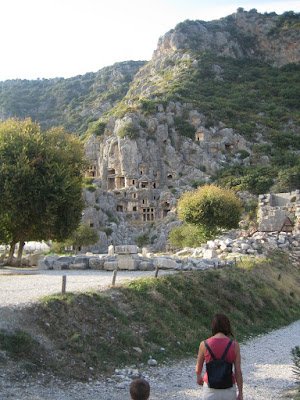
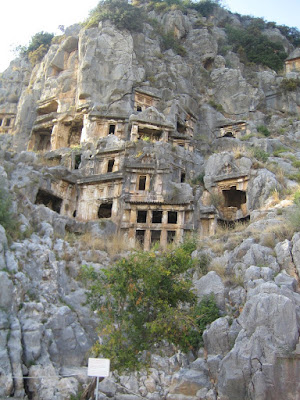
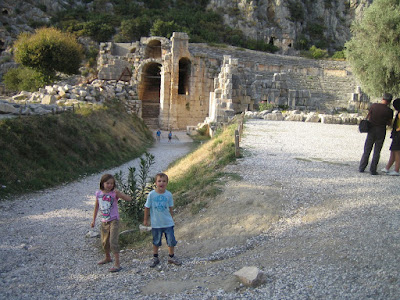
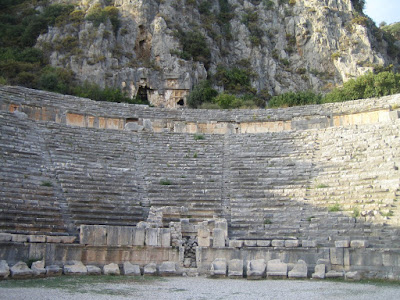
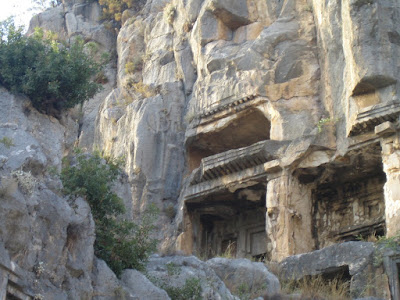
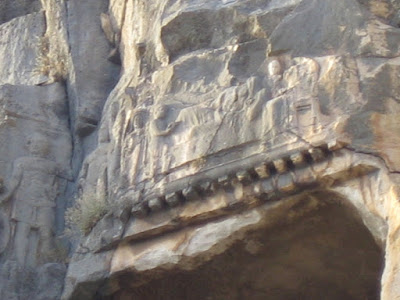
Also, Myra is where St. Nicolas was bishop, so we can find his church and tomb which had been partly renovated by the russian when the Tsar Alexander II bought the church in 1863. The place has been obviously turned into a touristic shopping stop...what else to expect from Santa Claus ancestor!! The place is full of small shops of Byzantine art.
Olympos
Not much to say here, as my intention was to stop by on our way back to Antalya. I was mostly curious about the eternal flames to be found there and known as the Chimaera (see mythical link http://en.wikipedia.org/wiki/Chimera_(mythology) ) and which is fueled naturally by methane liberated from the earth cracks. However, again we underestimated the time to reach the place and finally only reached a very strange place filled with funny looking tree houses and mud everywhere (I guess the place was under major restauration? ..and the family was not so inspired by the place! ):
But this gave us the opportinuty to check out the Olympos mountain, which gave its name to the city. In turkish, it is called the Tahtalı Dağı (or Timber Mountain) and alsmots reaches 2400m.
We finsihed the trip to Antalia where we have stayed for a night in the old city district (Kaleici) strictly reserved for pedestrians. It has a lot of Ottoman-type architectural buildinds...
the famous, Kesik Minare (litterally the broken Minaret) going through all sort of transformation from various periods and finally partly destroyed during a fire in 1896!
The view of the Taurus mountain from Antalya
Finally some generic comments about our trip, that could be useful to anyone planning a first-time trip to this place:
+the food: great and healthy. Very much appreciated the Mezeler (starters) which serve very similar purpose as Tapas in Spain and typically very heathly. A must is the Hummus probably the best I ever had!
+Roads : travelling around the region is not so simple as it is quite remote and isolated by mountain and sea ....the mountain litterally reaches the sea making any road construction quite expansive and a more direct roads with tunnel makes it proably much more expansive than a longer roads avoiding the most predominant obstacles. For example, Kas – Kaleucagiz à vol d'oiseau is 20km ... but when we got there by roads to see Kekova, it took us about 1 hour 30min from our rented house!? It seems as if the place is more accessible by boats, as confirmed by te number europenan boats at the port, and some having sailed as far away as Norway (actually one couple we met reached Turkey from the east after a complete trip around the world!!).
+ trees blossom amid the very dryness soil (however it is surely high in nutrient.. and we often witness what was probably Terra Nossa (http://en.wikipedia.org/wiki/Terra_Rossa) with its reddish color! (reminded me of a trip to Prince Edward Island with its famous red beach ...). A lot of Grenada Pomegranate apple, Orange and Lime trees grow about anywhere ... sometimes amazingly out of concrete and dry soil in dense cities!
- On the negative side: the continuous buying pressure when walking around touristic and commercial district and neighborhood (ok that is also very culture-related, and for them that is also a way of communicating but it is not something I'm comfortable with). Also there is often confusion with price, as most of the time price not shown and sometimes after negociating we just realized that they were talking in euros, or yet that there is a sur-tax with some plate since they were apparently over-sized... this infamous touristic price versus local .. . and some nice picture at a friend price : (this photo was worth 2.50 euros !)
Ok that is about it for what I can remember... overall it is a place higly recommeded and we will surely go back to visit other regions in the future ... Cappadocia (http://www.cappadociaturkey.net/) looks like a very good candidate!.
Martin

